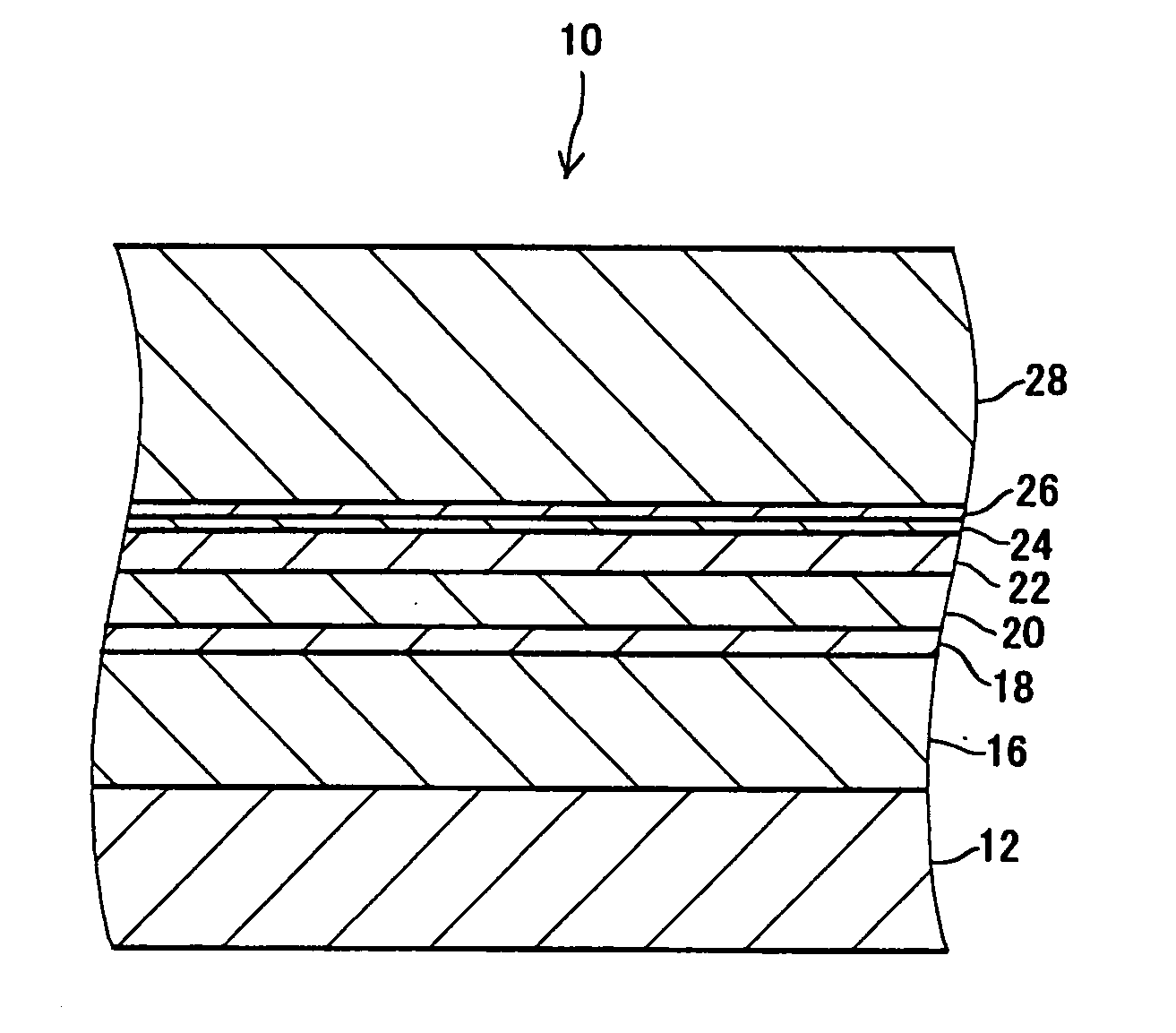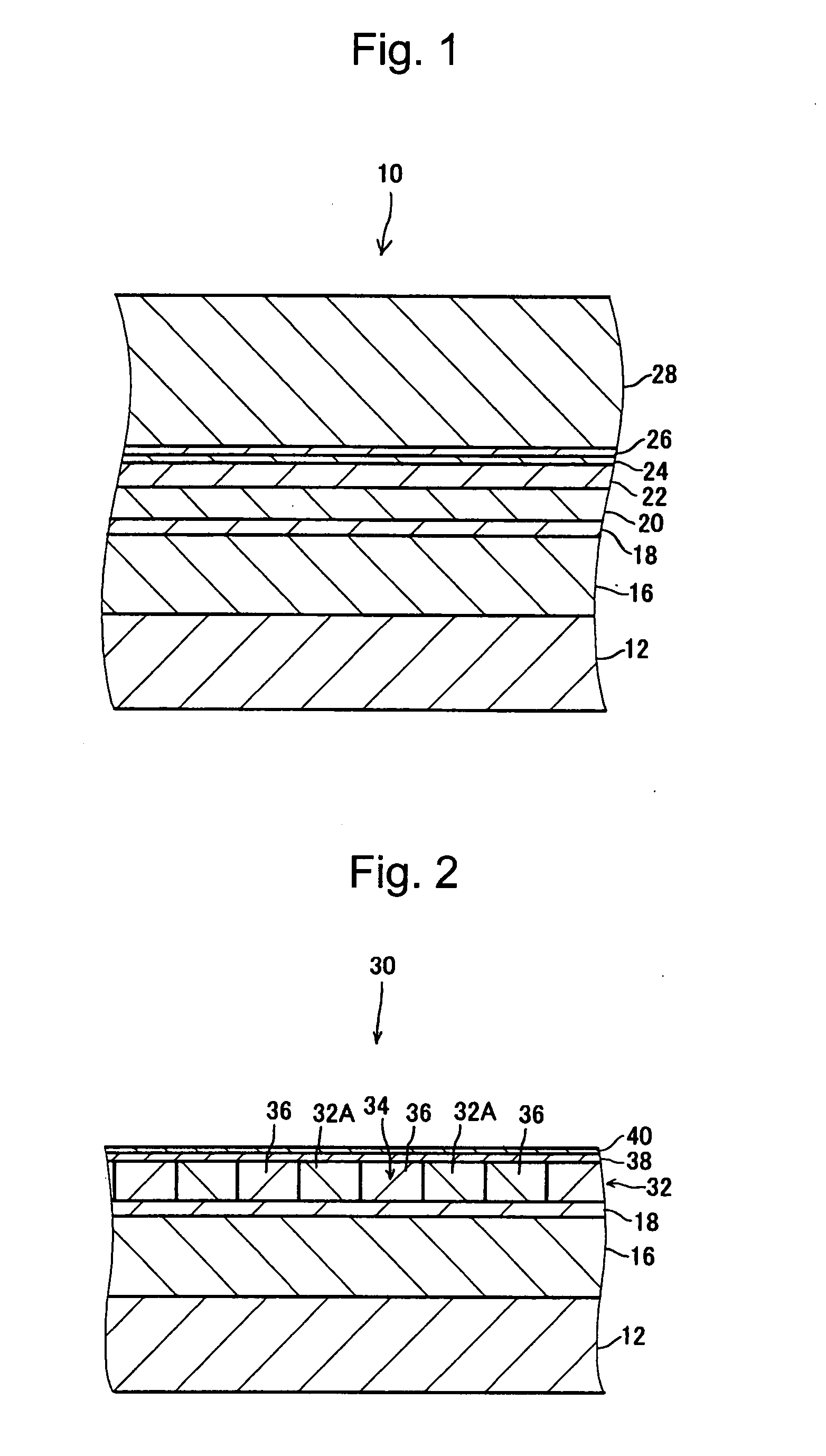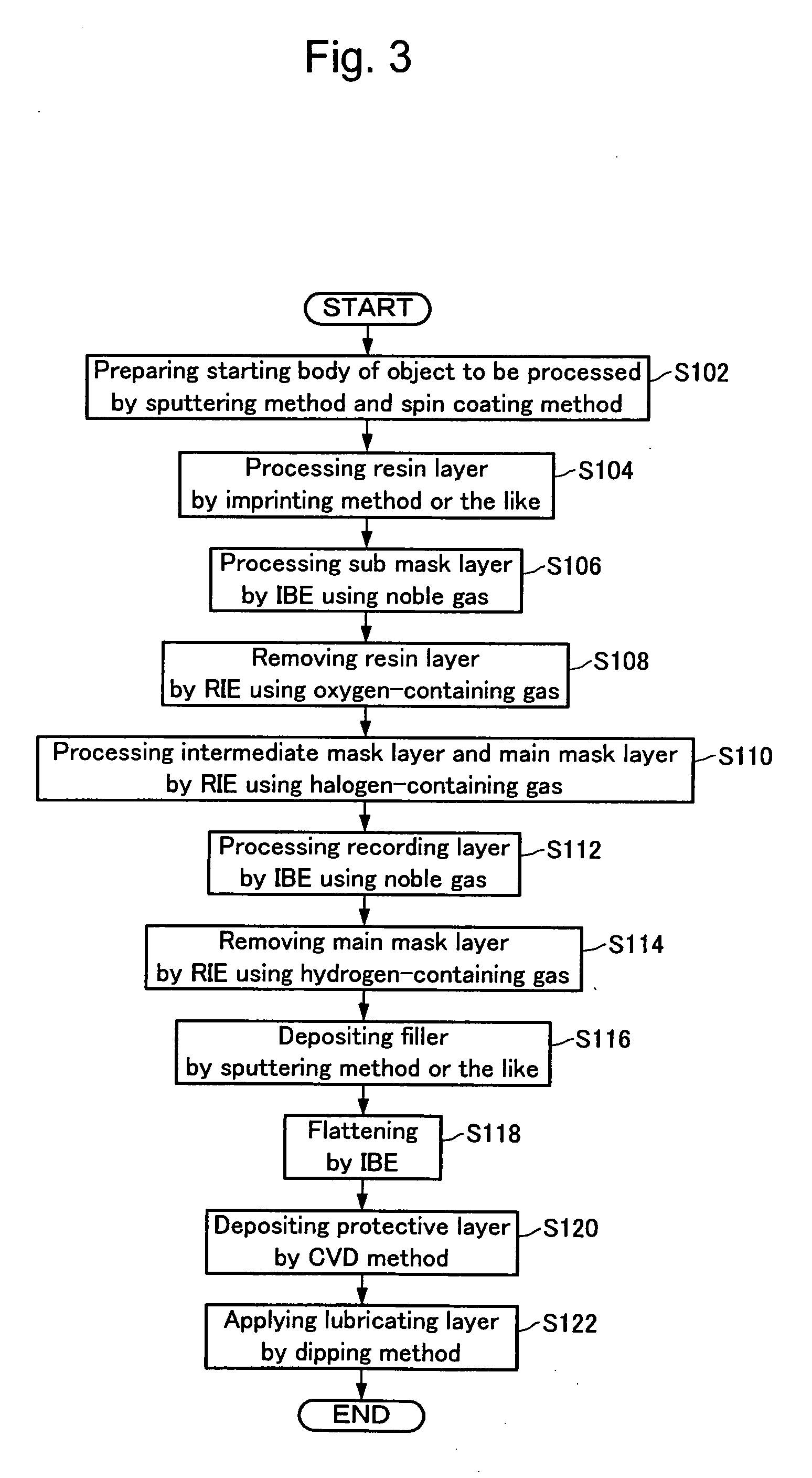Method for manufacturing magnetic recording medium
a manufacturing method and magnetic recording technology, applied in the manufacture of record carriers, magnetic layer coatings, record carrier forms, etc., can solve the problems of deteriorating the magnetic characteristics of the recording layer, the limit of the head processing technology, and the limitation of the areal density improvement method, etc., to achieve high precision and remove reliably
- Summary
- Abstract
- Description
- Claims
- Application Information
AI Technical Summary
Benefits of technology
Problems solved by technology
Method used
Image
Examples
working example
[0120]The magnetic recording medium 30 was manufactured as described in the first exemplary embodiment. Specifically, the starting body of the object to be processed 10 was prepared (S102).
[0121]The substrate 12 had a thickness of 0.6 mm and an outer diameter of 48 mm. The diameter of the center hole was 12 mm. The substrate 12 was made of glass.
[0122]The soft magnetic layer 16 had a thickness of 100 nm and was made of a CoZrNb alloy.
[0123]The seed layer 18 had a thickness of 30 nm and was made of Ru.
[0124]The recording layer 20 (32) had a thickness of 20 nm and was made of a CoCrPt alloy.
[0125]The main mask layer 22 had a thickness of 12 nm and was made of C (carbon).
[0126]The intermediate mask layer 24 had a thickness of 3 nm and was made of Si.
[0127]The sub-mask layer 26 had a thickness of 2 nm and was made of Ni.
[0128]The resin layer 28 had a thickness of 70 nm and was made of an acrylic resin. The resin layer 28 was formed by a spin coating method, where the resin was applied o...
PUM
| Property | Measurement | Unit |
|---|---|---|
| thickness | aaaaa | aaaaa |
| thickness | aaaaa | aaaaa |
| thickness | aaaaa | aaaaa |
Abstract
Description
Claims
Application Information
 Login to View More
Login to View More - R&D
- Intellectual Property
- Life Sciences
- Materials
- Tech Scout
- Unparalleled Data Quality
- Higher Quality Content
- 60% Fewer Hallucinations
Browse by: Latest US Patents, China's latest patents, Technical Efficacy Thesaurus, Application Domain, Technology Topic, Popular Technical Reports.
© 2025 PatSnap. All rights reserved.Legal|Privacy policy|Modern Slavery Act Transparency Statement|Sitemap|About US| Contact US: help@patsnap.com



